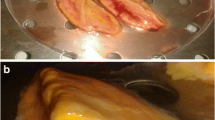Abstract
1. Evidence exists that associations of adrenal nicotinic acetylcholine receptors (nAChRs) with the cytoskeleton play an important role in signal transduction pathways by maintaining these receptors in a functional state. These studies were designed to explore this possibility and elucidate the mechanism by which antimitotic agents inhibit activation of adrenal nAChRs.
2. Functional studies demonstrated that vincristine, tubulozole, podophyllotoxin, and demecolcine inhibited nAChR-stimulated catecholamine release noncompetitively and in a concentration-dependent manner, with IC50 values of 3 (1–10), 5 (2–10), 8 (4–15), and 19 (9–39) μM, respectively.
3. Detergent extraction experiments indicated that approximately 36% of adrenal nAChRs were associated with the detergent-insoluble cytoskeletal fraction. When chromaffin cells were first treated with antimitotic agents and then detergent solubilized, a significant reduction occurred in the population of adrenal nAChRs associated with the detergent-insoluble cytoskeleton.
4. These studies support an association of adrenal nAChRs with microtubules and suggest that the mechanism by which the antimitotic drugs interfere with the signal transduction pathway is by inducing dissociation of nAChRs from the microtubular network.
Similar content being viewed by others
REFERENCES
Ben-Ze'ev, A., Duerr, A., Solomon, F., and Penman, S. (1979). The outer boundary of the cytoskeleton: A lamina derived from plasma membrane proteins. Cell 17:859–865.
Bencherif, M., and Lukas, R. J. (1993). Cytochalasin modulation of nicotinic cholinergic receptor expression and muscarinic receptor function in human TE671/RD cells; A possible functional role of the cytoskeleton. J. Neurochem. 61:852–864.
Ding, A. H., Porteu, F., Sanchez, E., and Nathan, C. F. (1990). Downregulation of tumor necrosis factor receptors on macrophages and endothelial cells by microtubule depolymerizing agents. J. Exp. Med. 171:715–727.
Gu, H., Wenger, B. W., Lopez, I., McKay, S. B., Boyd, R. T., and McKay, D. B. (1996). Characterization and localization of adrenal nicotinic receptors: Evidence that mAb35-nicotinic receptors are the principal receptors mediating adrenal catecholamine release. J. Neurochem. 66:1454–1461.
Harlow, E., and Lane, D. (1988). Storing and purifying antibodies. In Antibodies. A Laboratory Manual, Cold Springs Harbor Laboratory, Cold Springs Harbor, NY, p. 283–318.
Hunt, R. C., Dewey, A., and Davis, A. A. (1989). Transferrin receptors on the surface of retinal pigment epithelial cells are associated with the cytoskeleton. J. Cell Sci. 92:655–666.
Lindstrom, J., Einarson, B., and Tzartos, S. (1981). Production and assay of antibodies to acetylcholine receptors. Methods Enzymol. 74:433–361.
Maconochie, D. J., and Knight, D. E. (1992). A study of the bovine adrenal chromaffin nicothinic receptor using patch clamp and concentration-jump techniques. J. Physiol. 454:129–153.
McKay, D. B. (1989). Structure-activity studies on the actions of taxol and related taxanes on primary cultures of adrenal medullary cells. J. Pharmacol. Exp. Ther. 248:1302–1307.
McKay, D. B., and Burkman, A. M. (1993). Nicotinic and non-nicotinic receptor-mediated actions of vinblastine. Proc. Soc. Exp. Biol. Med. 203:372–376.
McKay, D. B., and Schneider, A. S. (1984). Selective inhibition of cholinergic receptor-mediated 45Ca++ uptake and catecholamine secretion from adrenal chromaffin cells by taxol and vinblastine. J. Pharmacol. Exp. Ther. 231:102–108.
McKay, D. B., Aronstam, R. S., and Schneider, A. S. (1985). Interactions of microtubule-active agents with nicotinic acetylcholine receptors: Relationship to their inhibition of catecholamine secretion by adrenal chromaffin cells. Mol. Pharmacol. 28:10–16.
Prives, J., Fulton, A. B., Penman, S., Daniels, M. P., and Christian, C. N. (1982). Interactions of the cytoskeletal framework with acetylcholine receptors on the surface of embryonic muscle cells in culture. J. Cell Biol. 92:231–236.
Stya, M., and Axelrod, D. (1983). Mobility and detergent extractability of acetylcholine receptors on cultured rat myotubes: A correlation. J. Cell Biol. 97:48–51.
Vale, R. D., and Shooter, E. M. (1982). Alterations of binding properties and cytoskeletal attachment of nerve growth factor receptors in PC12 cells by wheat germ agglutinin. J. Cell Biol. 94:710–717.
Young, S. H., and Poo, M.-M. (1983). Topographical rearrangement of acetylcholine receptors alters channel kinetics. Nature (London) 304:161–163.
Author information
Authors and Affiliations
Rights and permissions
About this article
Cite this article
Lopez, I., McKay, D.B. Effects of Antimitotic Agents on Secretion and Detergent Extractibility of Adrenal Nicotinic Acetylcholine Receptors. Cell Mol Neurobiol 17, 447–454 (1997). https://doi.org/10.1023/A:1026350619823
Issue Date:
DOI: https://doi.org/10.1023/A:1026350619823




